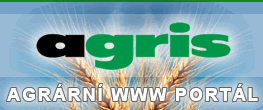LIMITATION OF PEST CONTROL AND HEALTH STATUS AND YIELD WINTER OILSEED RAPE
09.12.1999 | Odborné konference
Teresa Ojczyk, Renata Zielonka
Varmia-Masurian University in Olsztyn, Faculty of Agriculture and Environmental Management
Summary
In the strict two-year field experiment performed in the seasons 1994/95-1995/96 effects of two experimental factors (method of pest control and cultivar) on yield of winter oilseed rape were studied. It was found that there was a relation between limitation of insecticides application and plant health status only during favourable season for crop growth.
Lack of stem pests control resulted in 2% yield reduction and desisting from rape blossom beetle control was reflected in 12% yield reduction whereas rape blossom beetle and stem pests were not controlled this value increased to 13%.
Introduction
Role of insecticides application in oilseed rape growing is out of the question because pest are able to damage 20-60% of seed yield [5]. Lack of the control of stem pests led to weakening of the plant and according to some reports [1,2,3,5] enhanced susceptibility to fungal diseases. Relationship insecticide control - health status is modified by environmental factors and among them weather [1,2,4] during the growing period.
The aim of presented studies was to determine relation between reduction of the number of insecticides applications and yield of winter oilseed rape.
Methods
In the paper results of strict two-years field experiments performed in Experimental Station in Bałcyny (near Olsztyn), in the seasons 1994/95-1995/96. Split-plot design in 4 replications were used and two experimental factors were studied:
· I method of pest control: A - full programme measures made in the autumn and in the spring (control of stem pests, rape blossom beetle and pod pests); B - control of stem pests, rape blossom beetle (no control of stem pests); C - control of stem and pod pests (no control of rape blossom beetle); D - control of pod pests (no control of stem pests and rape blossom beetle)
· II cultivar : Leo, Lirajet
Experiment was performed on Luvisol classified to third class and good wheat complex (according to Polish System of Soil Classification). Soil showed pH 5.7 (first cycle of studies) and 6,5 (second cycle) in 1 M KCl. Forecrop of winter oilseed rape was every year cereal mixture after spring wheat. Before drilling the following rates of mineral nutrients were applied: 20 kg N (urea); 50 kg P2O5 (triple superphosphate), 100 kg K2O (potassium chloride). Spring nitrogen rate - 180 kg N (urea) was split into 120 at the phase of regrowth + 60 kg at the blooming stage. Oilseed rape was sown in the last days of August at the rate of 110 seeds per 1 m2 in row space 20 cm at the depth 1.5 -2.0 cm. Area of each plot was 18 m2. Pest control was performed according to design of the experiment taking into consideration harmfulness threshold. All practices were made according to the standard rules.
At the stage of harvest maturity level of infestation was evaluated (9- lack of infestation, 1 - infestation of all plants) by Sclerotinia sclerotiorum and Botrytis cinerea then the level of infestation by stem weevils (Ceuthorhynchus napi Gyll., C. quadridens Panz) - expressed in the level of damaging of stem core (in per cent of total stem height).
Results

Two seasons of the study were very variable as far as meteorological conditions are concerned. The pattern of weather conditions of the first cycle of the study (1994/95) favoured development and allowed to obtain the high yield of oilseed rape. Number of seed yielding plants was 69-84 per 1 m2 and yield ranged from 39 to 55 dt/ha. Frost during winter 1995/96 and unfavourable weather conditions in the spring resulted in low survival rate i.e 20-25 26-39 plants per 1 m2 of Lirajet Leo, respectively. Obtained yield 18-30 dt/ha, was low and the crop response to experimental factors was different than year before.

In 1995 in treatment A (full control) weevils infested 9% of plants and stem injuries was not intense (channel in stem of 0-4 cm). For treatment B (no control of stem pests) 16-23% infested plants was recorded and stem injuries was visible in 6-9% of stem length; first spaying against rape blossom beetle also reduced stem pests activity. For treatment C (without rape blossom beetle control) 8 (Lirajet) or 16% (Leo) infested plants were found and injuries of stem core amounted to 5-8% of stem length. For treatment D (no control of stem pests and rape blossom beetle) resulted in 76-86% plant infestation and 36-39% injured stem length (Fig. 1, 2).
In 1996 on few plantations which survived more abundant occurrence of pests was observed. For treatment A (full control) as many as 6 sprayings were made: one - against stem weevils, three - against rape blossom beetle and two against pod pests; whereas in 1995 1+2+1, respectively. Despite that in treatment with full control 34% and 44% of plants were infested by stem pests, Lirajet and Leo cultivar, respectively. However, injuries of stem were visible at 6-9% of stem length. Lack of the first spraying (against stem pests) did not affect the number of infected plants (29-47%), but significant higher appeared to be level of stem injury (19-22%). Lack of pest control against rape blossom beetle and limitation of the control only to control of pod pests resulted in very intense infestation of oilseed rape plants by stem pests (72-89% plants) and injuries of stem core was found at 32-44% of stem length. In two years of the study higher degree of infestation by pests was found for plant cv. Leo.

In the first year of the studies relation between insecticides application with occurrence of Botrytis cinerea and Sclerotinia sclerotiorum was apparent i.e. lack of infestation for treatment with full control and increase of infestation in treatments without control of stem pests and rape blossom beetle. These relations were seen in the case of cv. Leo.

In the second year of the studies relation between the intensity of insecticides application and Sclerotinia sclerotiorum occurrence was not so obvious, and for Botrytis cinerea even higher (by 0,3-0,6) plant infestation was observed in treatment with full control. Only in 1996 high degree of infestation oilseed rape plants by Alternaria brassicae was noted. Higher infestation of oilseed rape plants by fungal diseases was directly connected with frost injuries. Weakened and damaged by frost plants were more susceptible to fungal diseases. It was reflected in lower seed yield.
Cultivar | Cycle of | - | Method of pest control | |||
| - | studies | A | B | C | D | mean |
Leo | * | 34.4 | 33.8 | 30.5 | 31.6 | 32.6 |
Lirajet | - | 40.1 | 39.2 | 35.4 | 33.0 | 36.9 |
* | 1 | 46.4 | 46.2 | 45.2 | 42.4 | 45.1 |
| - | 2 | 28.2 | 26.8 | 20.7 | 22.2 | 24.5 |
On an average | 37,3 | 36.5 | 32.9 | 32.3 | - | |
LSD (a =0,05) for: method of pest control - 3.4; cultivar - 3.0; interaction season × method of control - 4,8 | ||||||
In the first year of the studies significant decrease of the obtained yield was found in treatment D without any control of stem pests and rape blossom beetle. In the second significant lower yield was found for treatments D and C. On an average for two experimental seasons relatively small (by 2%) yield reduction for treatments without control against stem pests whereas lack of rape blossom beetle resulted in significant yield decrease by 12% and when stem pests and when measures against rape blossom beetle and stem pests were not undertaken this reduction amounted to 13%.
Conclusions
1. In the favourable season for growth and development of oilseed rape the significant relation between limitation of insecticides application and plant health status was revealed - plants unprotected against stem pests and rape blossom beetle were infected by Sclerotinia sclerotiorum and Botrytis cinerea.
2. In the conditions of winter injuries of oilseed rape roots relations between insecticide application and plant health status was not found.
3. Lack of stem pests control resulted in 2% yield reduction whereas desisting from rape blossom beetle control was reflected in 12% yield reduction whereas rape blossom beetle and stem pests were not controlled this value increased to 13%.
References
1. Garbe V. 1995. Influence of insect damage on the infestation degree of blackleg. Proc. 9th International Rapeseed Congress Cambridge, UK 4-7 07.1995 - “Rapeseed today and tomorrow”. 2: 667-669.
1. Kelm M., B. Walczak. 1995. Changes in growth and yield parameters of winter rape as a results of injury by the stem weevil (Ceutorhynchus quadridens). Proc. 9th International Rapeseed Congress Cambridge, UK 4-7 07.1995 - “Rapeseed today and tomorrow”. 2: 673-675.
2. Sadowski Cz., W. Budzyński. 1995. Zdrowotność rzepaku ozimego uprawianego bez zwalczania szkodników w warunkach rejonu olsztyńskiego. Rośliny oleiste, XVI, 2: 229-234.
3. Steinbach P. 1995. “Early wilting” of winter oilseed rape caused by abiotic factors and secondary pathogens in the spring of 1994 in Northern Germany. Proc. 9th International Rapeseed Congress Cambridge, UK 4-7 07.1995 - “Rapeseed today and tomorrow”. 2: 592-594.
4. Toboła P. Cz. Muśnicki, W. Budzyński, W. Malarz. 1994. Skutki zaniechania ochrony rzepaku przed szkodnikami w zależności od intensywności nawożenia azotem. Rośliny oleiste, XV, 2: 41-48.
Další články v kategorii Zemědělství
- Erozní vyhláška má řešit i vítr, Motoristé plánují změny (15.12.2025)
- Šebestyán vedl zemědělský dotační fond, od letoška zastupoval velké agropodniky (15.12.2025)
- Na Litoměřicku a Nymbursku se potvrdila v malochovech newcastleská choroba (15.12.2025)
- Ministr Výborný na poslední Radě ministrů v roce 2025: Podpora inovací je pro budoucnost zemědělství zásadní (12.12.2025)
- Týden v zemědělství podle Petra Havla – č. 50 (12.12.2025)
- MŽP poskytne 300 milionů korun na instalace fotovoltaik na zemědělské půdě (12.12.2025)
- Regenerativní zemědělství se po letech pokusů i praxe jeví jako možné a vhodné (11.12.2025)
- Ministerstvo zemědělství vyhlásilo výsledky veřejné soutěže programu na podporu aplikovaného výzkumu ZEMĚ II (11.12.2025)
- Zemědělci by mohli nově řešit i větrnou erozi, MŽP připravilo novelu vyhlášky (10.12.2025)
- Podcast | Šebek: Nelžeme si do kapsy, že nová vláda bude podporovat malé a lokální farmy (10.12.2025)

 Tweet
Tweet





